Relevant Material Found in Chapter 7:
The National Laboratories after the Cold War - In Search of a Mission:
The emergence of the Cold War shortly after the end of WW II will represent a fundamental shift in how America views the value of science.
A brief history lesson as most don't likely know this:
- At the Yalta Conference in 1947, the United States, the Soviet Union, the United Kingdom, and France agreed to split Germany into four zones of occupation after the war.
- At that time, The US ambassador in Moscow warned that the Soviet Union desired to expand throughout the world and prescribed the "containment"of communism as the chief US foreign policy strategy.
Note: at this time there really was no EVIDENCE that the USSR had this immediate desire. After all, there were 26-27 million Soviet Citizens killed in WW 2. Prior to WW 2 the population of the USSR was about 170 million which means that 15% of Soviet citizens died. Hence, there is a lot of rebuilding of infrastructure needed in the USSR before they can start to dominate the world. Perhaps if that reality were recognized so that joint rebuilding effort would have occurred the Cold War never would have been. The presence of the Cold War, and the resulting nuclear buildup might is the unintended consequence of this US Policy based mostly on assumption.
So now we need to come up with a containment policy that will be built on technology.
The acceleration of that technology will largely be the basis for the formation of the National Labs. The justification will be that economic competitiveness on a global scale will be driven also by this National Lab infrastructure.
Of course, the initial establishiment of DOE national labs was the Manhattan Project.
From the book:
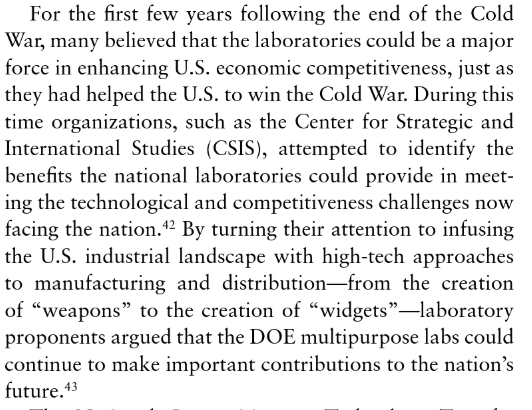
And of course we won the Cold War in 1989 when then lead to this mostly failed iniative. (GOCO = government owned, contactor operated); (GOGO = government owned, government operated)
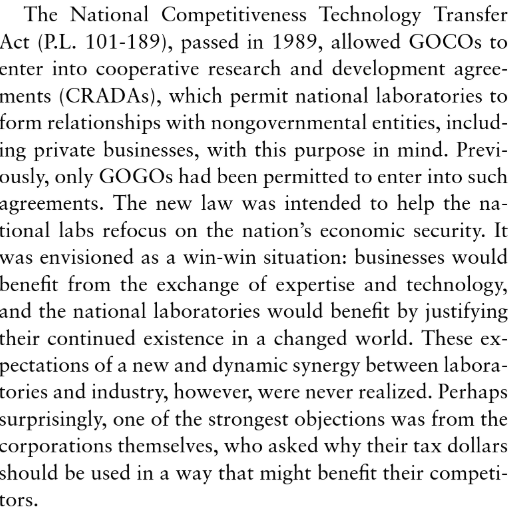
Next come steps to eliminate the DOE since its "national purpose" was becoming obscure to many in Congress. Since then, this concept of become obscure in the eyes of Congress as gripped many other Federal science agencies that live now in constant fear. An indirect manifestation of this fear is the mostly flat budgets given to these agencies year after year:
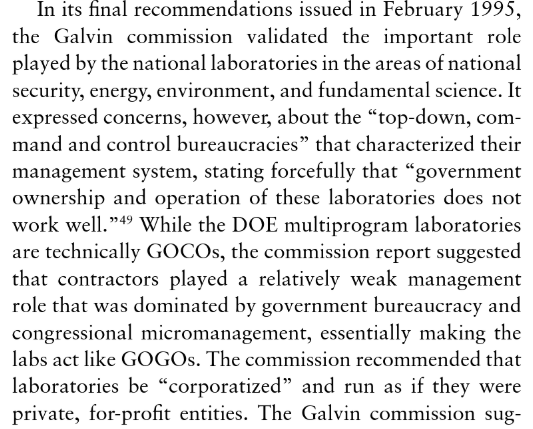
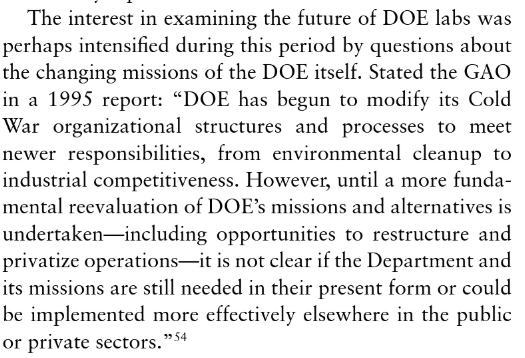
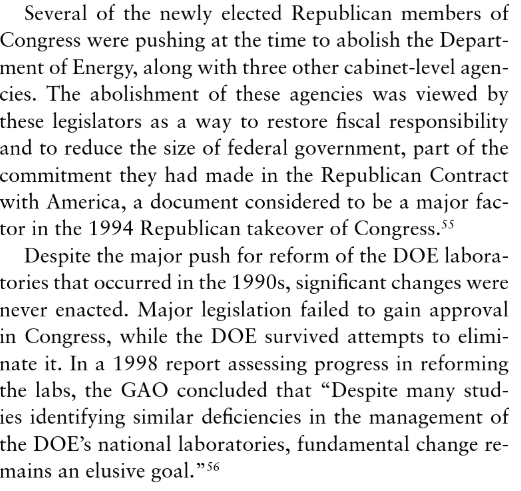
Moving towards better clarity:


But which agency does Big Data and Big Science? The one that claims they already do this (context doesn't matter) and has the relevant infrastructure but not necessarily the relevant intellectural property:
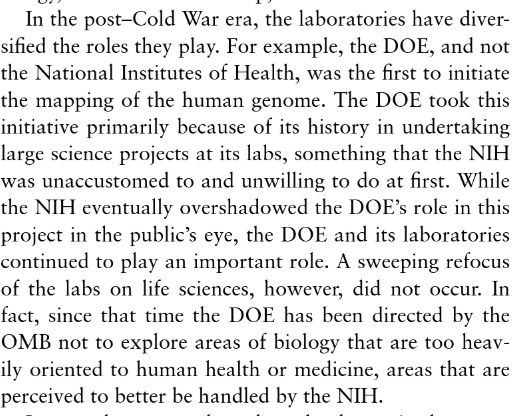
All of this leads to several important policy questions, which to date, have not even been discussed very much, let alone resolved.
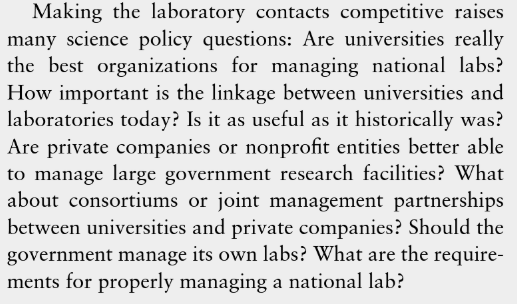
|